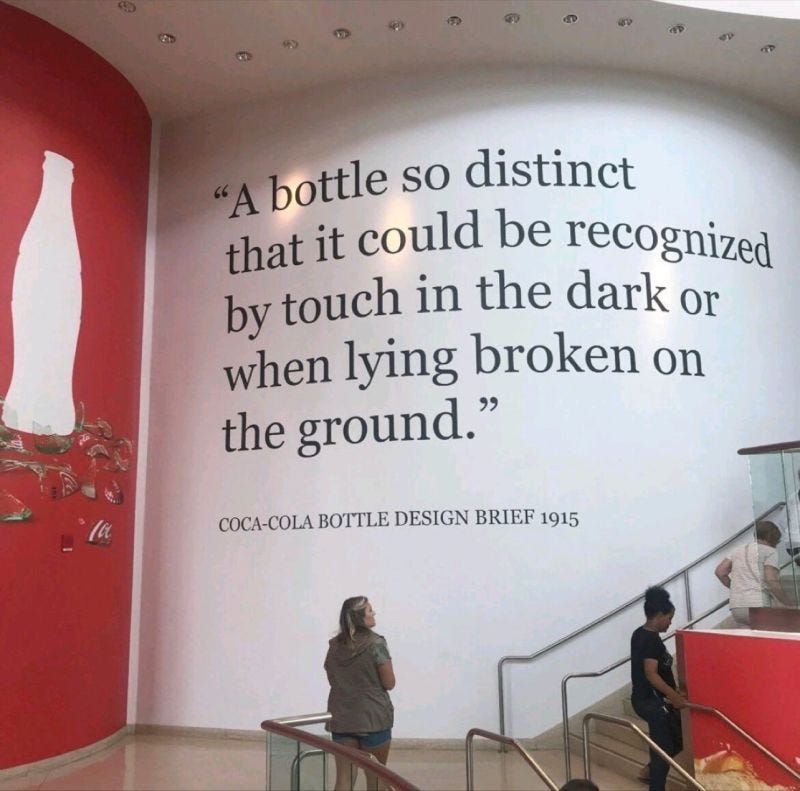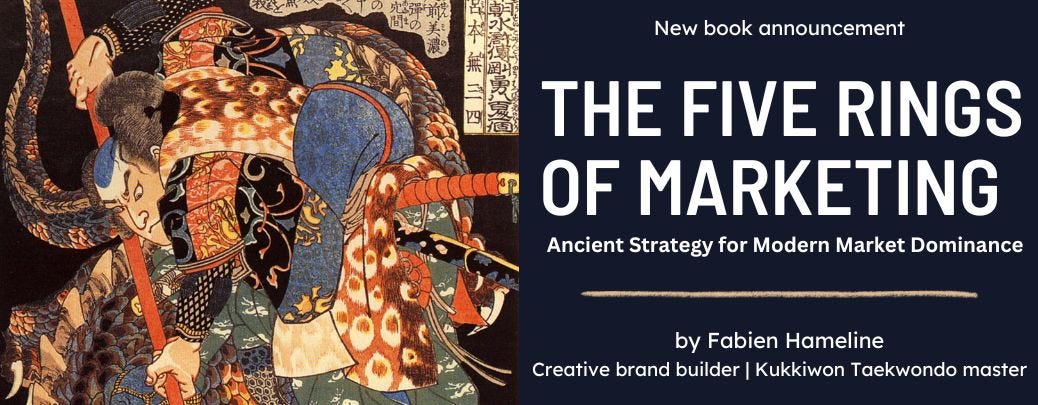About being creatively SMART
Your secret weapon for creative campaign efficiency
Creating a marketing campaign is exciting, fun, creative, and fresh. It often challenges us, and if we are lucky, we have eureka moments that teach us more about ourselves. In short, it’s exciting.
But too often, creative teams focus on the fun part: the creative part, the concept, and the idea before clearly understanding the campaign's ultimate goals and purposes. That’s right: a creative does not live by itself. It’s not 2005 anymore. Virality does really not exist anymore. It is made. Or at least it needs a push. this is why the why, how, and what are so important. These need to be defined before even thinking about the idea. The idea should serve a bigger purpose, not vice versa.
But way too often, I have experienced this feeling:
“Let’s find how we can use this great creative concept I have and make it fit in our marketing effort regardless of the actual needs!” — said No Successful Marketer Ever
As a result, the process can become very convoluted, with the added diplomacy required to tell the client (or in-house) that their idea is not such a great idea after all. So, how can this be mitigated?
This is why using a brief to kick off any campaign is best. Let’s see why and how it should be used and why you must implement SMART goals.
The brief: your campaign's secret weapon
Picture this: You're standing at the helm of a ship, about to embark on a grand adventure. Your destination? A successful marketing campaign. But without a map, you're just drifting aimlessly. Enter the creative brief - your compass, map, and North Star all rolled into one.
But what exactly is this magical document, and why should you care? Let's dive in.
The Power of the Brief
A creative brief isn't just another piece of paperwork to file away. It's the beating heart of your campaign, pumping life and direction into every aspect of your project. Think of it as the ultimate game plan, combining together strategy, goals, and creative vision in one neat package.
Aligning the Troops
Ever played a game of “Chinese whispers”? That's what launching a campaign without a brief feels like. Your message gets garbled, your vision blurred, and before you know it, you're left with a Frankenstein's monster of ideas that barely resemble your original concept.
A well-crafted brief acts as your campaign's universal translator. It ensures everyone - from the CEO to the intern - speaks the same language and marches to the same beat.
Fueling Creativity, Not Stifling It
Now, I know what you're thinking. "Won't a brief box in my creatives?" Quite the opposite! A good brief is like a springboard for creativity. It provides the necessary context and boundaries within which imagination can truly flourish. After all, creativity loves constraints.
Saving Time, Money, and Sanity
Let's face it - time is money, and in the fast-paced marketing world, both are in short supply. A solid brief acts as your project's GPS, helping you avoid costly detours and keeping you on the fastest route to success. It's the difference between a smooth ride and a bumpy road filled with endless revisions and miscommunications.
Still not believing in the power of the brief? Check out the 1915 brief for Coca-Cola’s emblematic bottle👇
The Recipe for Success
So, what goes into this magical document? While every brief is unique, here are some key ingredients:
A dash of background (What work did not work on the last campaign, what do we want to try this time around/scope);
A heaping spoonful of objectives (what do we want to achieve here);
Addressing who will see the campaign;
A sprinkle of key messages (voice of tone/product focus etc…)
A pinch of practical constraints (timeline, budget);
A clear understanding of where the campaign is going to be released (which medium/channels) ;
A clear list of deliverables.
I put a creative brief template together for you to download here👇
Even if these are good guidelines, it is easy to say “we want to target everyone!”, or have unrealistic goals (we want to increase sales 200%), or vague timeline (let’s try and we’ll see when to stop). But no. This is the best way to burn your budget without moving the needle. This is why defining a clear set of parameters is essential. Enters SMART goals.
What are SMART goals?
SMART goals is a framework applied in project management, and also in personal development. First defined in 1981 by George Doran, it helps with goal setting in any endeavor. It helps to have a precise understanding of the expected outcomes by defining the following:
Specific: what is the specific goal/area for improvement?
Measurable: how do you measure the result of the effort?
Achievable: Is the goal realistic? ( ≠ I want to triple my sales in 2 days)
Relevant: Does it align with company goals, and priorities, is it useful, and is it useful now?
Time-bound: Adding a time limit frames the goal within all the other factors. It also holds for accountability.
Here is an accurate depiction of what happens when you don’t use SMART goals and a brief:
In the case of a SaaS company selling a project management solution, here is an example of what SMART goals might look like when launching an OOH campaign.
Specific
Identify clear and precise goals for the OOH campaign.
Objective: Increase brand awareness among target businesses in urban areas.
Measurable
Establish metrics to track the campaign's effectiveness.
Metric: Achieve a 25% increase in website traffic from targeted urban locations within three months of the campaign launch.
Achievable
Ensure that the goals are realistic given the company's resources and market conditions.
Resource Assessment: Based on the budget allocated for the OOH campaign, determine if reaching a 25% increase in traffic is feasible through the selected advertising channels (e.g., billboards, transit ads).
Relevant
Although obvious, it is essential, as sometimes the company goals can be interpreted differently by team members. So it allows to align the campaign goals with the broader business objectives.
Alignment: The goal of increasing brand awareness supports the company’s mission to become a leading project management solution for businesses, thereby attracting new customers.
Time-bound
Set a clear timeline for achieving the goals. For example:
Timeline: Launch the OOH campaign by the start of Q2 2025 and measure the results by the end of Q2 2025.
In the end, you can have the greatest creative concept, idea etc… but if it does not serve a specific purpose, and even more, does not serve the brand/company vision and priorities, it is completely useless. First, in a time where ad spending is optimized all the time an ad that does not perform is cut very quickly. Second, if like me, you do retros, and try to understand why a campaign did not perform, very quickly you can come to the fact that certain elements in the brief were not addressed, or that the brief was not clear enough, hence the SMART goals.
SMART goals give a framework to foster your creativity while at the same time delivering what the company needs.
If you found this post insightful, it would mean the world to me if you could consider supporting my publication by sharing it to 2-3 people you think might benefit from it. Hell, might make a good LinkedIn post!
Inspired by the legendary samurai strategy guide by Miyamoto Musashi, I am working on The Five Rings of Marketing. In it, I draw parallels between this timeless battle-tested guide and modern marketing mindsets to achieve market supremacy.
⚡Connect⚡
You can connect with me on LinkedIn (let me know in the “note” when you add me you come from here) or in the Substack chat if you are a fellow Substacker (DMs open).
Drop a comment below, and let me know your take 👇. You can subscribe here if you have not yet.
Listen🎙️ to the Brand Runner podcast on:





